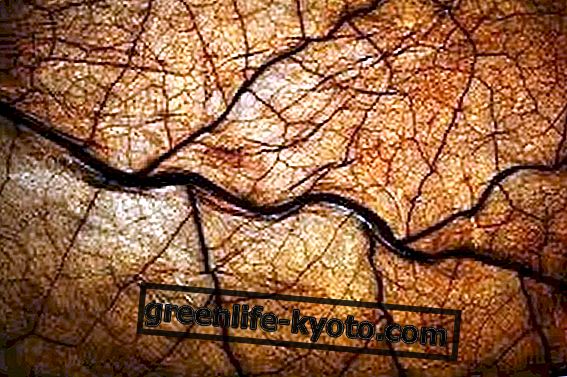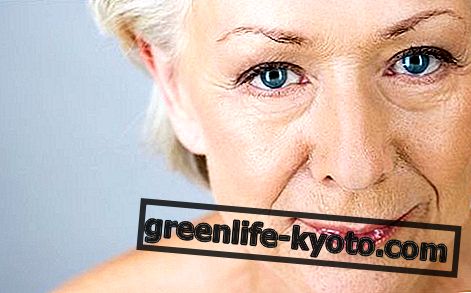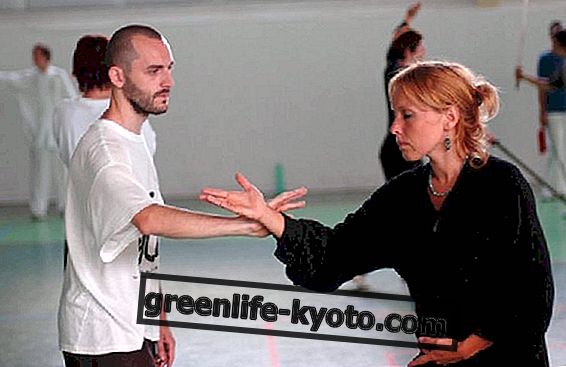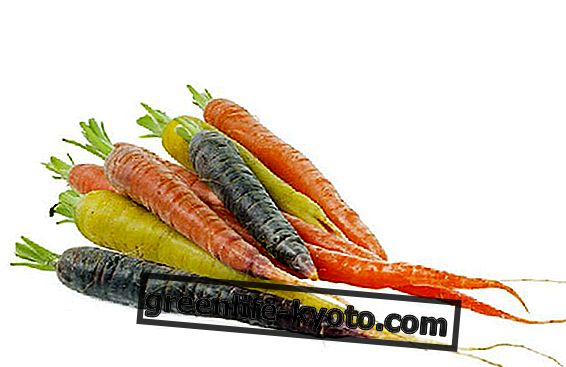The brain is the main organ of the nervous system and the most important of the human body. Regulator of all the functions of the organism, the brain also controls our most primitive behavior. Let's find out better.
>

Anatomical description of the brain
The central nervous system is composed of two parts:
- Brain (brain and cerebellum)
- Spinal cord
The spinal cord is contained within the vertebral column and is formed by ascending and descending nerve fibers along which the stimuli coming from the various parts of the body rise to the brain and the command pulses descend. Some sensory stimuli do not reach the brain, they stop at the spinal cord. Those who reach the brain determine conscious acts, others produce reflex acts (withdraw a hand from a hot object, try to land with the arms when the balance is lost).
The nerves that branch out from the medulla are called spinal nerves, while the cranial or encephalic nerves are those that branch out from the brain and can be sensory nerves (or sensors) or motor nerves . These conductors, the nerves, are made up of nerve cells, each provided with a long extension (cylinders) in turn formed by many nerve fibrins. The cranial nerves are 12 : the first is the olfactory nerve, the second is the optic nerve, the third is the oculomotor nerve, the fourth is the pathetic or trochlear nerve, the fifth is the trigeminal nerve, the sixth is the abducent nerve, the seventh it is the facial nerve, the eighth is the auditory nerve, the ninth the pharyngeal glosso, the tenth the vagus, the eleventh, the accessory nerve, and the twelfth, the hypoglossal nerve.
The brain is located in the skull and is covered by 3 membranes called meninges (the dura mater, the arachnoid, the pia mater). It is divided into two hemispheres: the right controls the left side of the body and vice versa. In the white inner part of the brain there are the brain centers, while the external greyish area is the cerebral cortex divided into various lobes (frontal, temporal, occipital and parietal).
Thought processing is a function of the cerebral cortex, but it cannot be localized in it, because brain function must be considered in its integral unity and not divided into delimited areas.
Natural treatments and therapies for the brain
Ginkgo Biloba improves circulation and increases the blood supply to the brain, thus promoting mental acuity, concentration, short-term memory, and cognitive ability.
If we enter the sphere of the Theory of Signatures, we find an analogy that has always been found between the walnut kernels and the shape of the brain. Walnut has always been associated with the brain due to its similarity to it, and was therefore considered an excellent remedy for treating insomnia and anxiety. It is no coincidence: the walnut is rich in mineral salts and useful nutritive principles for brain functions. Many other oil seeds are good for the brain, because they contain antioxidants, vitamins and folic acid.
ALUMINUM, ENEMY AND FRIEND OF THE BRAIN
Yoga
An article in the German newspaper "Der Spiegel" showed that yoga is beneficial for the brain. It seems that yoga, practiced with constancy and intensity, is able to increase the thickness of the gray matter of the brain.
The article is based on a study conducted by German psychologist Britta Hoelzel and her colleague Sara Lazar at the "Massachusetts General Hospital" in Boston. The two scholars examined 26 people, men and women, all victims of a strong state of stress, fasting in practice and meditation. After participating in a Buddhist-oriented psychophysical program, the participants saw their psychological state improve considerably. TAC tests confirmed that the thickness of the gray matter in some brain areas had increased considerably. The scientific results show that cognitive ability is increased thanks to new and regenerated nerve cells .
Discover the benefits of yoga for the brain better
Traditional Chinese Medicine
"The Brain is the sea of marrow" ( Ling Shu, chap.33). In traditional Chinese medicine the Brain is located between the Bai Hui (VG 20) and Feng Fu (VG 16) acupuncture points. There is an inseparable bond between the Brain-Heart-Kidney triad. The Brain receives the Kidney Jing, processed to become Shen, heart energy, individual awareness. In this triadic bond also the Marrow is placed therefore, being the way of diffusion of the Jing .
The Brain is divided into three planes that reflect the three Dan Tien :
- 1st level: survival, physical experience of life, automatic reflexes
- 2nd level: interaction with the world, emotions, mood
- 3rd level: the lesson one draws from being in the world, life understood as the ability to evaluate one's own feeling, the development of awareness
In the Chinese cyclical logic and especially in the Taoist logic of complementarity and synthesis, level 3 returns to a level 1 enriched by a certain harmony with respect to being in the world.
Other disciplines
Chinese acupuncture can cure various diseases that affect the brain. The brain has a blood-brain barrier (BBB) that prevents the penetration of insoluble lipids of chemicals, drugs or other substances. This "barrier" makes it difficult to treat brain disorders, since the active ingredients of the drugs cannot be absorbed directly by the brain tissue. Acupuncture provides another mechanism to positively influence the brain and bypass the BBB.
For this it is useful in the treatment of Parkinson's disease, Alzheimer's, autism, anxiety, insomnia, mood swings, depression, insufficient memory, ischemia, dizziness, epilepsy, stress and various forms of addiction such as smoking.
Curiosity about the brain
Walking is good for the brain. Researchers from the University of Illinois at Urbana-Champaign conducted a study which states that walking is good not only for the body but also for the mind. The two entities are not cartesianamente separated, but united in a holistic way. Going about one kilometer a day the risk of experiencing cognitive impairment is halved.













